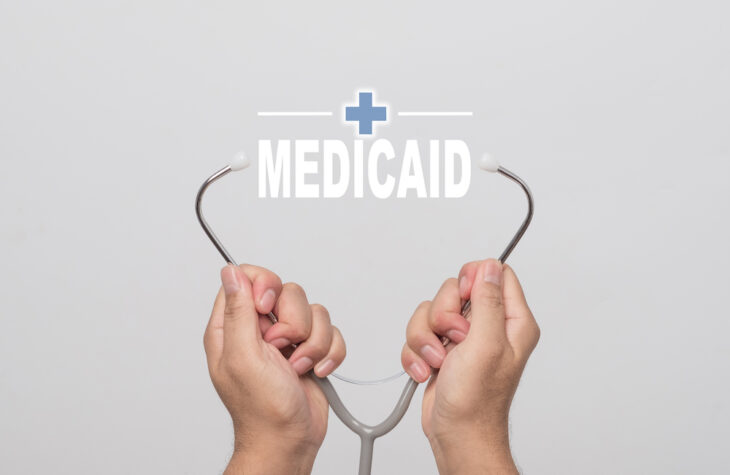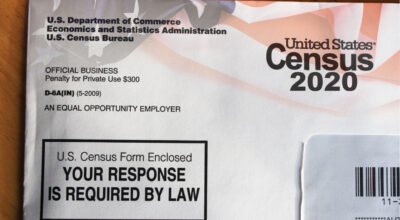
CRA Budget in Focus: Medicaid

The Center for Renewing America (CRA) proposes a series of reforms to the Medicaid program that would accomplish two purposes. First, the budget would reorient the program towards the vulnerable populations for which Medicaid was originally designed by eliminating funding for Obamacare’s expansion to the able-bodied. Second, the budget would alter the funding mechanisms for Medicaid by realigning the federal match in ways that significantly reduce the incentives for states to offload their responsibilities onto the federal government. These changes would produce a program focused on the most needy and fewer ways for states to “game” Washington’s funding. These changes also serve as a necessary corrective to the woke “health equity” agenda that has infused the whole program which we have elsewhere explained in more detail.
Eliminate Medicaid Expansion
Even before Obamacare’s expansion of Medicaid fully took effect in 2014, analysts concluded that much of the eligible population comprised able-bodied adults without dependents. In a 2012 study, the Urban Institute estimated that of the eligible adult population nationwide, 82.4% consisted of those without dependent children.1
Since that time, several key trends have emerged. First, enrollment and costs have exploded beyond projections. Overall, enrollment in states that have expanded (16.7 million) stands at nearly triple those states’ original projections (6.5 million), according to the Foundation for Government Accountability.2 Due to higher-than-expected enrollment and higher-than-expected per-beneficiary spending, by 2018, taxpayers had spent 157 percent more on expansion than the states who had expanded projected initially.3
Second, Medicaid expansion is crowding out private insurance coverage. As of 2019, more than one-third (36%) of Medicaid expansion enrollees had some form of coverage through their employer—a percentage that has likely grown in recent years, as states have been prohibited from removing ineligible individuals from the Medicaid rolls during the pandemic.4 Other individuals could potentially purchase coverage on the private market, particularly if lawmakers repealed the regulations that caused the cost of individual insurance coverage to more than double within four years.5
Third, traditional Medicaid populations continue to face neglect. Because Obamacare provided states with a higher match rate to cover able-bodied adults than to cover Medicaid’s traditional populations—the aged, blind, and individuals with disabilities—many states have focused on funding expansion rather than serving the most vulnerable populations for which Medicaid was originally designed.
While Medicaid programs must cover nursing home care as a mandatory benefit, the optional nature of home-based care means that many states can—and do—impose waiting lists for home and community-based services (HCBS). As of 2021, over 655,000 individuals with disabilities sit on waiting lists for home-based care, a number that has grown in recent years.6 During the first four years of Obamacare’s Medicaid expansion, more than 21,000 individuals with disabilities and living in expansion states died while on waiting lists to receive HCBS—an illustration of these states’ perverse priorities that placed able-bodied adults over helping the most vulnerable.7
Many beneficiaries take a dim view of their Medicaid coverage, largely because they often cannot access care. A 2015 research paper using data from a natural experiment in Oregon found that beneficiaries valued their coverage at between 20 and 40 cents on the dollar.8 One beneficiary went so far as to contrast being on Medicaid with having “real insurance”—that is, coverage they could actually use.9
Beneficiaries reach these conclusions because one former program director called a Medicaid card a “hunting license”—a government-granted permission slip allowing beneficiaries to try to find a physician who will treat them.10 Perhaps due to poor access to care, a 2013 study found no material improvement in physical health outcomes when comparing individuals newly insured in Medicaid with the uninsured.11
Repealing Obamacare’s Medicaid expansion would remove the incentives that encourage individuals with an offer of employer coverage to go on to the government rolls instead. It would also reorient Medicaid’s focus to prioritize those individuals for whom the program was originally designed, placing the most vulnerable ahead of able-bodied adults.
End Provider Taxes
This proposal would end a mechanism that amounts to little more than legalized money laundering. Through these taxes, a group of medical providers within a state—for instance, hospitals, nursing homes, or even Medicaid managed care plans—agree to an assessment on their organizations. The state uses these funds to receive matching dollars from Washington and then distributes those dollars back to the respective providers.
Provider taxes represent one of the few government-imposed levies that any individual or organization likes paying because it ultimately leads to more revenue for the medical profession. Certain safe harbor limits apply; for instance, taxpayers (e.g., hospitals or nursing homes) are not guaranteed to receive as much Medicaid funding from the state as it “paid in” via the original tax.12
However, provider taxes have proven lucrative for both state Medicaid programs and the health care industry. Even before Obamacare’s enactment, a veritable industry of consultants—many of them funded by contingency fees—emerged that focused solely on advising state Medicaid programs on how to bilk the federal government into paying a larger share of the state’s Medicaid costs via provider taxes and other funding schemes.13
Many states that have accepted Obamacare’s expansion to the able-bodied have funded the 10% state share of expansion costs through new or expanded provider taxes—using a budget gimmick to shift costs back to Washington rather than taking general revenue dollars from education or other state priorities. One leftist group noted that 14 states funded some or all of their expansion costs in 2018 via some type of provider or insurer tax, effectively advertising that states could pay their costs with “free” federal money using this funding gimmick.14
However, numerous independent budget experts, including the Simpson-Bowles Commission and the Rivlin-Domenici commission in 2011, have recommended phasing out and eliminating Medicaid provider taxes.15 Journalist Bob Woodward noted that when serving as Vice President, Joe Biden himself reportedly took a dim view of provider taxes during negotiations over the debt limit in 2011:
It’s a scam, Biden agreed. The states were gaming the system, taxing doctors and hospitals so they could get federal reimbursements and then returning the money to the providers. Let’s call it like it is, and let’s just do this….It could save $40 billion. “If we can’t do this—” the Vice President said, “come on!”16
The quotes from Woodward suggest the current President understands the abusive nature of these money laundering schemes and appreciates the need for reform—or at least he did in 2011. Since then, unfortunately, the “scam” has only increased among states, with the percentage of state Medicaid funds generated by provider taxes more than doubling from 2008 through 2018.17
Given Biden’s use of the “scam” terminology, eliminating the use of provider taxes would not “cut” federal dollars from Medicaid so much as eliminate a marginally licit funding source that states never should have used in the first place. Doing so would properly restore the balance between federal and state government, whereby the latter does not depend on bailouts and budget gimmicks from the former.
Eliminate the Federal Funding Floor
The federal government provides a Medicaid match to states based on the state’s income relative to the national average. However, the federal government also imposes a 50% floor on that match rate, meaning that Washington will pay at least half of the state’s Medicaid costs.
In several wealthy states, Medicaid matching rates would fall below the 50% match absent the statutory floor. The Congressional Budget Office estimates that eliminating the federal floor would, at present, affect a total of 13 states, whose matching rates would decline to between 4% and 49.75%.18
Particularly for wealthy states that would otherwise have a significantly lower match, the 50% federal floor provides perverse incentives to expand their programs in ways they might not if the federal government was not paying half the bill. For instance, in 2019, New York had the highest amount of Medicaid spending per state resident, at $2,986.30, roughly two-thirds higher than the national average of $1,791.46.19
A 2007 report analyzing Medicaid spending data examined this problem in closer detail. Contrary to the conventional wisdom that Medicaid would spend more money in poorer states, the study found “an inverse correlation between poverty rates and federal per capita Medicaid reimbursement. States with the highest poverty rates—such as Alabama, Louisiana, and Mississippi—received much lower Medicaid payments per capita than wealthier states like New York and several New England states.”20 This trend long preceded Obamacare’s Medicaid expansion and explains New York’s status as the highest per capita spender on the program. It also illustrates how the current Medicaid match system incentivizes wealthy states to keep expanding their programs rather than targeting assistance to poorer states that might need it most.
In addition, the federal floor on the match rate creates a one-way ratchet that encourages the perpetual growth of Medicaid. The guaranteed 50% match encourages states to expand their programs during strong economic times. Yet, it discourages them from scaling the program back during fiscal shortfalls because states must cut at least $2 in total Medicaid spending to save $1 in state general funds.
In New York—a wealthier state and the state that still spends the most on Medicaid per capita—a 2005 New York Times expose quoted the state’s former chief Medicaid investigator saying that as much as 40% of that state’s claims are questionable or potentially fraudulent.21 With Washington guaranteeing half of all program costs, the 50% floor on the federal match arguably discourages states like New York from fighting fraud and preserving program integrity.
Eliminating the floor on the federal Medicaid matching rate would reorient the program’s incentives towards poorer states. It would discourage wealthier states from over-expanding their programs and help restore a proper balance among the states and between the states and the federal government.
Conclusion
The Biden Administration has attempted to raise alarms about the proposals in the CRA budget. The criticism seems curious coming from a President who relied on a loophole his Administration now wants to close to avoid paying Medicare and Obamacare taxes—and did so in ways that tax experts of both parties have said violated federal laws.22 Some might therefore question why a President claiming to defend these programs declined to “pay his fair share” towards them.
Regardless, the budget proposes reasonable reforms to reorient the Medicaid program towards the populations for which it was designed and curb the abuses that have led states to “game” the system to increase the amount of largesse they receive from Washington.
Endnotes
1. Genevieve M. Kenney et al., “Opting in to the Medicaid Expansion Under the ACA: Who Are the Uninsured Adults Who Could Gain Health Insurance Coverage?” Urban Institute, August 2012, https://www.urban.org/sites/default/files/publication/25706/412630-Opting-in-to-the-Medicaid-Expansion-under-the-ACA.PDF, p. 9, Appendix Table 2.
2. Hayden Dublois and Jonathan Ingram, “Medicaid Expansion Is Causing an Enrollment and Budget Crisis,” Foundation for Government Accountability, January 19, 2022, https://thefga.org/wp-content/uploads/2022/01/Medicaid-Enrollment-and-Cost-Hikes-2.0.pdf.
3. Jonathan Ingram and Nicholas Horton, “A Budget Crisis in Three Parts: How Obamacare is Bankrupting Taxpayers,” Foundation for Government Accountability, February 1, 2018, https://thefga.org/wp-content/uploads/2018/02/A-Budget-Crisis-In-Three-Parts-2-6-18.pdf.
4. Jonathan Ingram and Nicholas Horton, “How Medicaid Expansion Is Crowding Out Private Insurance,” Foundation for Government Accountability, April 11, 2019, https://thefga.org/wp-content/uploads/2019/04/MedEx-Crowd-Out-Paper-DRAFT7.pdf.
5. Department of Health and Human Services, “Individual Market Premium Changes: 2013-2017,” ASPE Data Point, May 23, 2017, https://aspe.hhs.gov/sites/default/files/migrated_legacy_files//174771/IndividualMarketPremiumChanges.pdf.
6. Kaiser Family Foundation, “Waiting List Enrollment for Medicaid Section 1915(c) Home- and Community-Based Services Waivers,” Kaiser Commission on Medicaid and the Uninsured 2021 survey, https://www.kff.org/medicaid/state-indicator/medicaid-hcbs-waiver-waiting-list-enrollment-by-target-population-and-whether-states-screen-for-eligibility/?currentTimeframe=0&sortModel=%7B%22colId%22:%22Location%22,%22sort%22:%22asc%22%7D.
7. Nicholas Horton, “Waiting for Help: The Medicaid Waiting List Crisis,” Foundation for Government Accountability, March 6, 2018, https://thefga.org/wp-content/uploads/2018/03/WAITING-FOR-HELP-The-Medicaid-Waiting-List-Crisis-07302018.pdf.
8. Amy Finkelstein, Nathaniel Hendren, and Erzo F.P. Luttmer, “The Value of Medicaid: Interpreting Results from the Oregon Health Insurance Experiment,” National Bureau of Economic Research Working Paper 21308, June 2015, https://www.nber.org/system/files/working_papers/w21308/w21308.pdf.
9. Vanessa Furhmans, “Note to Medicaid Patients: The Doctor Won’t See You,” Wall Street Journal July 17, 2007, https://www.wsj.com/articles/SB118480165648770935.
10. Statement by DeAnn Friedholm, Consumers Union, at Alliance for Health Reform Briefing on “Affordability and Health Reform: If We Mandate, Will They (and Can They) Pay?” November 20, 2009, http://www.allhealthpolicy.org/wp-content/uploads/2016/12/TranscriptFINAL-1685.pdf, p. 40.
11. Katherine Baicker, et al., “The Oregon Experiment—Effects of Medicaid on Clinical Outcomes,” New England Journal of Medicine May 2, 2013, http://www.nejm.org/doi/full/10.1056/NEJMsa1212321.
12. Medicaid and CHIP Payment and Access Commission, “Health Care-Related Taxes in Medicaid,” May 2021, https://www.macpac.gov/wp-content/uploads/2020/01/Health-Care-Related-Taxes-in-Medicaid.pdf, p. 3.
13. Government Accountability Office, “Medicaid Financing: States’ Use of Contingency Fee Consultants to Maximize Federal Reimbursements Highlights Need for Increased Federal Oversight,” Report GAO-05-748, June 2005, https://www.gao.gov/assets/gao-05-748.pdf.
14. Families USA, “Options to Generate the State Share of Medicaid Expansion Costs,” January 2019, https://familiesusa.org/wp-content/uploads/2019/09/MCD_States-Share-10-Percent_Fact-Sheet.pdf, p. 5.
15. National Commission on Fiscal Responsibility and Reform, “The Moment of Truth,” December 2010, https://web.archive.org/web/20130530103543/http://www.momentoftruthproject.org/sites/default/files/TheMomentofTruth12_1_2010.pdf, p. 39; Bipartisan Policy Center, “Domenici-Rivlin Debt Reduction Task Force Plan 2.0,” December 3, 2012, https://bipartisanpolicy.org/download/?file=/wp-content/uploads/2019/03/D-R-Plan-2.0-FINAL.pdf, p. 5.
16. Quoted in Brian Blase, “Biden Was Right: Medicaid Provider Taxes a ‘Scam’ That Should Be Scrapped,” Forbes February 16, 2016, https://www.forbes.com/sites/theapothecary/2016/02/16/biden-was-right-medicaid-provider-taxes-a-scam-that-should-be-scrapped/?sh=7873604a1c6c.
17. Quoted in MACPAC, p. 1.
18. Congressional Budget Office, “Options for Reducing the Deficit, 2023 to 2032, Volume I: Larger Reductions,” December 7, 2022, https://www.cbo.gov/system/files/2022-12/58164-budget-options-large-effects.pdf, Option 3—Mandatory Spending: Reduce Federal Medicaid Matching Rates, pp. 18-21.
19. Mathematica, “Medicaid Long-Term Services and Supports Annual Expenditures Report: Federal Fiscal Year 2019,” Prepared for the Centers for Medicare and Medicaid Services, December 9, 2021, https://www.medicaid.gov/medicaid/long-term-services-supports/downloads/ltssexpenditures2019.pdf, Appendix Table C-4: Total Medicaid Expenditures by State, FY2017-2019, pp. 88-89.
20. Robert Helms, “The Medicaid Commission Report: A Dissent,” American Enterprise Institute Health Policy Outlook No. 2, January 2007, https://www.aei.org/wp-content/uploads/2011/10/20070111_200701AHPOg.pdf?x91208, p. 2.
21. Clifford Levy and Michael Luo, “New York Medicaid Fraud May Reach into Billions,” New York Times July 18, 2005, https://www.nytimes.com/2005/07/18/nyregion/new-york-medicaid-fraud-may-reach-into-billions.html.
22. Richard Rubin, “Biden Used Tax-Code Loophole Obama Tried to Plug,” The Wall Street Journal July 10, 2019, https://www.wsj.com/articles/joe-biden-used-tax-code-loophole-obama-tried-to-plug-11562779300; Treasury Department, “General Explanations of the Administration’s Fiscal Year 2022 Revenue Proposals,” May 2021, https://home.treasury.gov/system/files/131/General-Explanations-FY2022.pdf, pp. 65-67; Steven Nelson, “Biden Could Owe As Much As $500K in Back Taxes, Government Report Indicates,” New York Post September 23, 2021, https://nypost.com/2021/09/23/biden-could-owe-as-much-as-500k-in-irs-taxes-report/.



